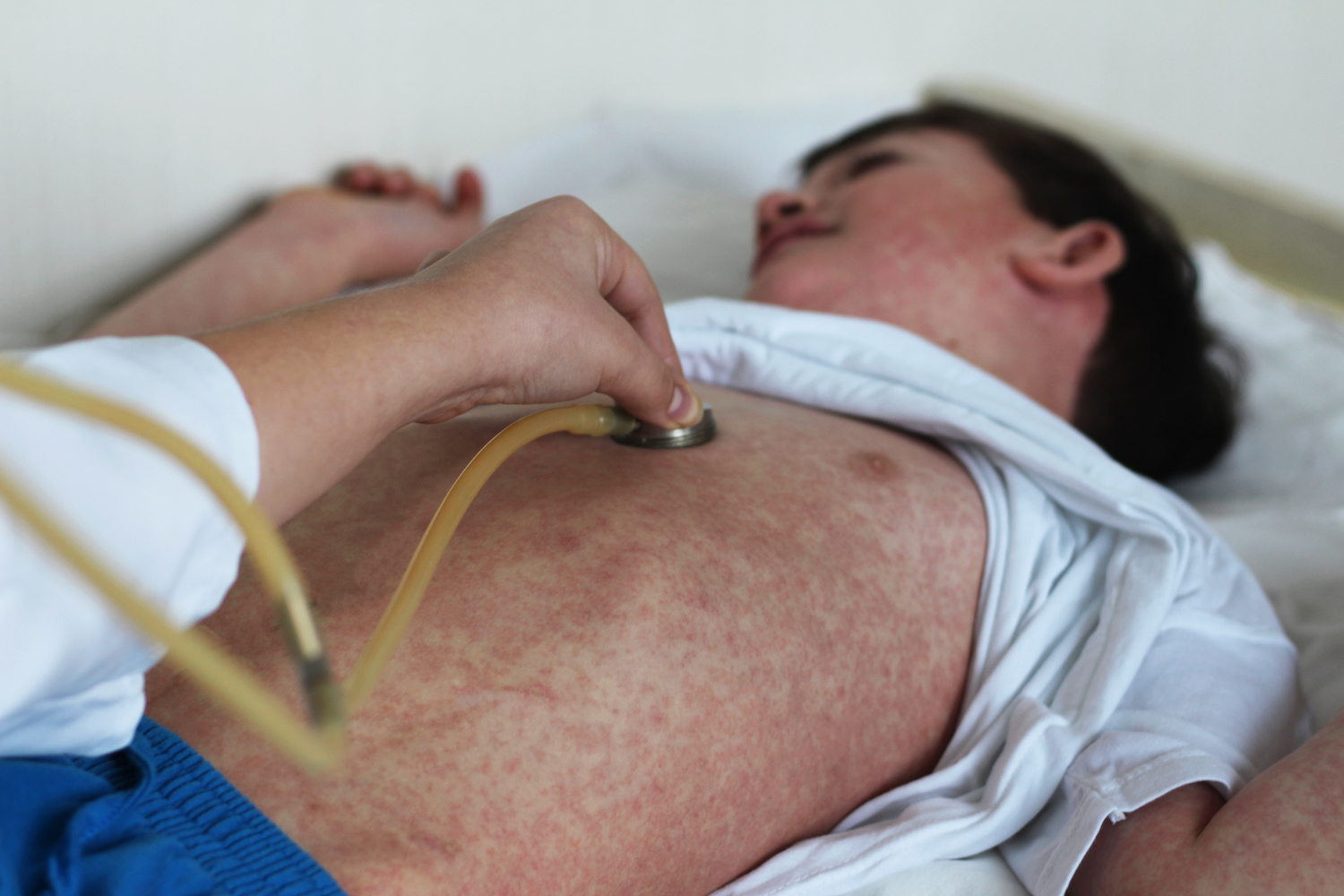Canada has lost its 'measles elimination status' — here's what that means
A large, ongoing outbreak that began in Canada in 2024 has cost the country its measles elimination status.

Canada has officially lost its measles elimination status, meaning the highly contagious disease is once again spreading consistently there.
The declaration was made by the Pan American Health Organization (PAHO), an international health agency, according to a Public Health Agency of Canada (PHAC) statement released Monday (Nov. 10). After reviewing recent epidemiological and lab data from Canada, the PAHO concluded that the same measles strain has circulated within the country for over a year.
For an infectious disease to be considered "eliminated" from a region, there must be no endemic transmission for at least a year. "Endemic transmission" refers to the consistent, sustained spread of a disease in a particular population; it does not refer to sporadic cases that might occur after an infected traveler imports a disease from elsewhere, for instance.
In July, the PAHO noted that the Americas have seen a 29-fold increase in measles cases in 2025 compared with 2024. At that time, Canada had reported the largest number of cases of the countries assessed, with 3,170 reported between January and July.
As of late October, Canada had reported more than 5,100 measles cases this year, including 4,777 confirmed cases and 361 probable ones. These cases have been seen in 10 areas: Alberta, British Columbia, Manitoba, New Brunswick, Nova Scotia, Ontario, Prince Edward Island, Quebec, Saskatchewan and the Northwest Territories.
This year's cases mark the continuation of a large, multijurisdictional outbreak that first hit the country in October 2024, according to the PHAC statement. "While transmission has slowed recently, the outbreak has persisted for over 12 months, primarily within under-vaccinated communities," PHAC officials said.
Now, PHAC is collaborating with the PAHO and working with federal, provincial, territorial and community partners to improve vaccination coverage, strengthen surveillance efforts and provide evidence-based guidance to communities, according to the statement. Canada could earn back its elimination status if "transmission of the measles strain associated with the current outbreak is interrupted for at least 12 months."
Get the world’s most fascinating discoveries delivered straight to your inbox.
Meanwhile, the United States eliminated measles in 2000 but has seen a similar recent increase in the number of cases. Texas has been hardest hit among the states affected by outbreaks this year, followed by Arizona, New Mexico and Kansas. Per the latest data, nearly 1,700 cases have been reported across the entire U.S. so far in 2025, up from 285 in all of 2024.
"Measles vaccination is the best way to prevent measles and stop outbreaks. We see this clearly by looking at the vaccination status of measles cases in the United States," the Johns Hopkins U.S. Measles Tracker says. "Unvaccinated individuals or those with unknown vaccination status represent almost all reported measles cases" in the country this year.
Although the childhood vaccination schedule has been under renewed scrutiny under Health and Human Services Secretary and anti-vaccine activist Robert F. Kennedy Jr., for now the recommendations for measles vaccination have remained much the same.
Nonetheless, measles vaccination rates have been falling to concerningly low levels in the U.S. in recent years. Models suggest that, if current vaccination rates stay steady, the disease may become endemic to the country within 20 years. That scenario would lead to an estimated 851,300 cases, 170,200 hospitalizations and 2,550 deaths from measles over the next 25 years from now. And given that measles can cause a range of long-term health complications in survivors of the illness, the U.S. would also see those knock-on issues surge.
If vaccination rates fall, rather than remain steady as in the above scenario, the projected outcomes are worse, the models show.
This article is for informational purposes only and is not meant to offer medical advice.

Nicoletta Lanese is the health channel editor at Live Science and was previously a news editor and staff writer at the site. She holds a graduate certificate in science communication from UC Santa Cruz and degrees in neuroscience and dance from the University of Florida. Her work has appeared in The Scientist, Science News, the Mercury News, Mongabay and Stanford Medicine Magazine, among other outlets. Based in NYC, she also remains heavily involved in dance and performs in local choreographers' work.
You must confirm your public display name before commenting
Please logout and then login again, you will then be prompted to enter your display name.


